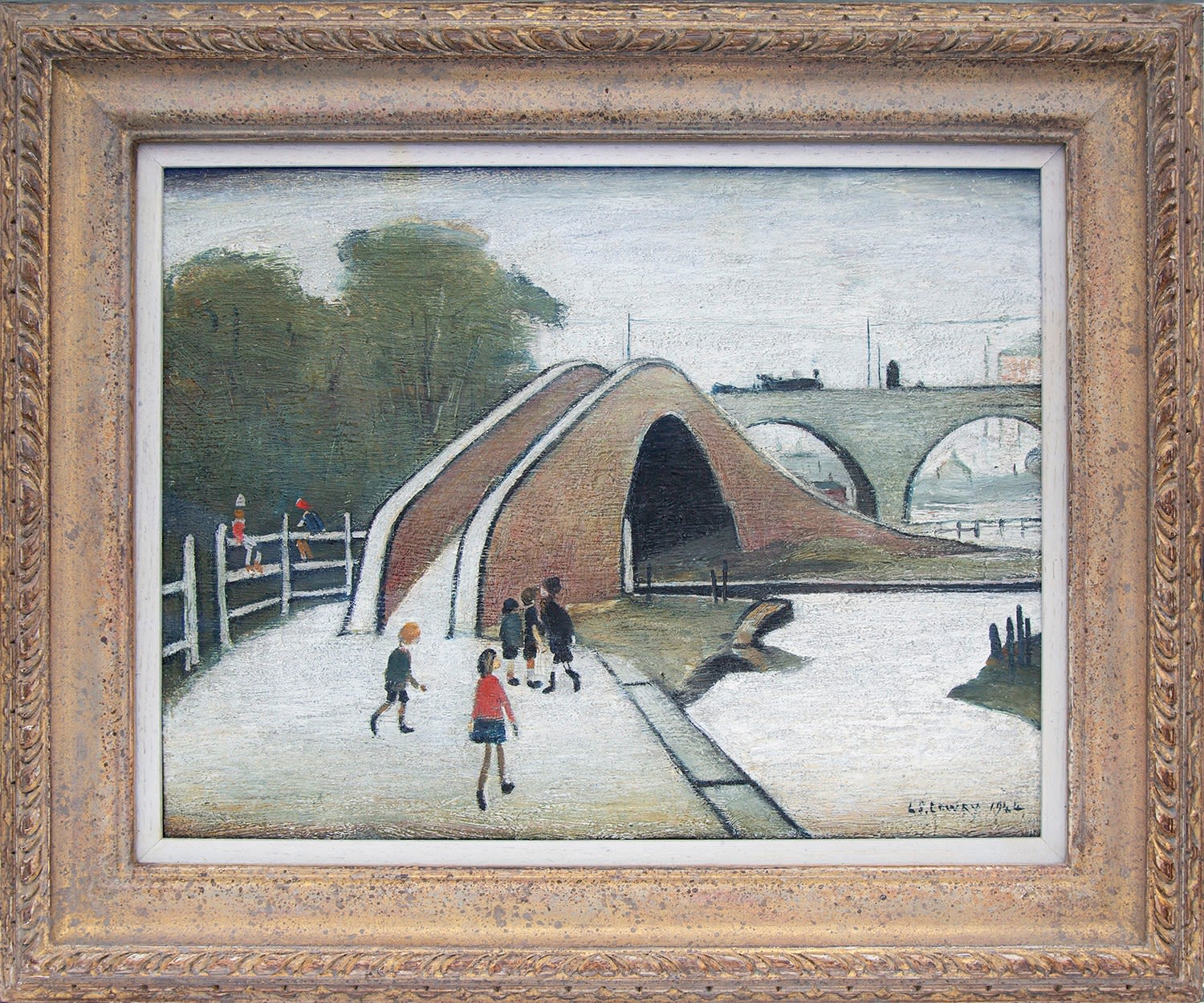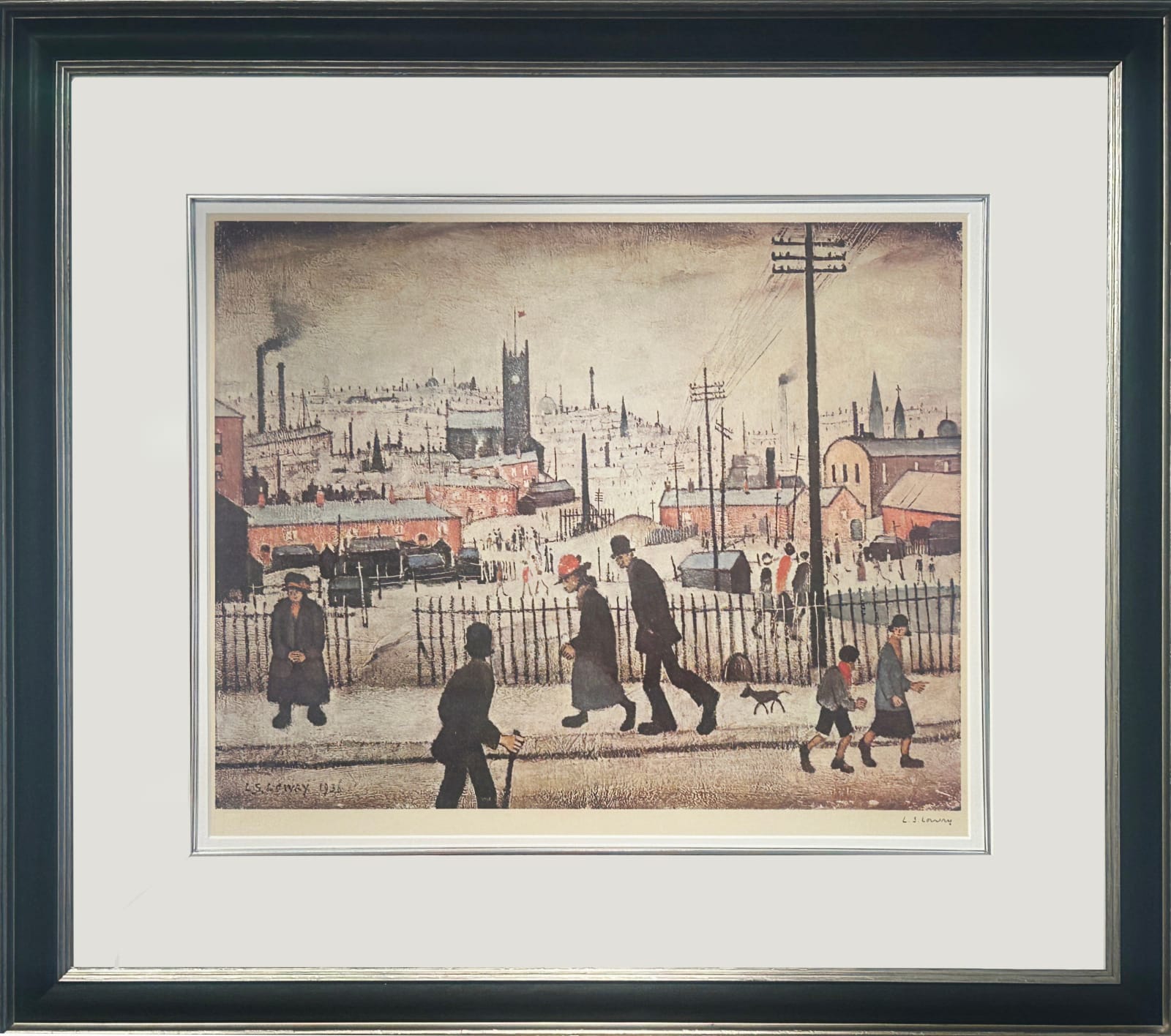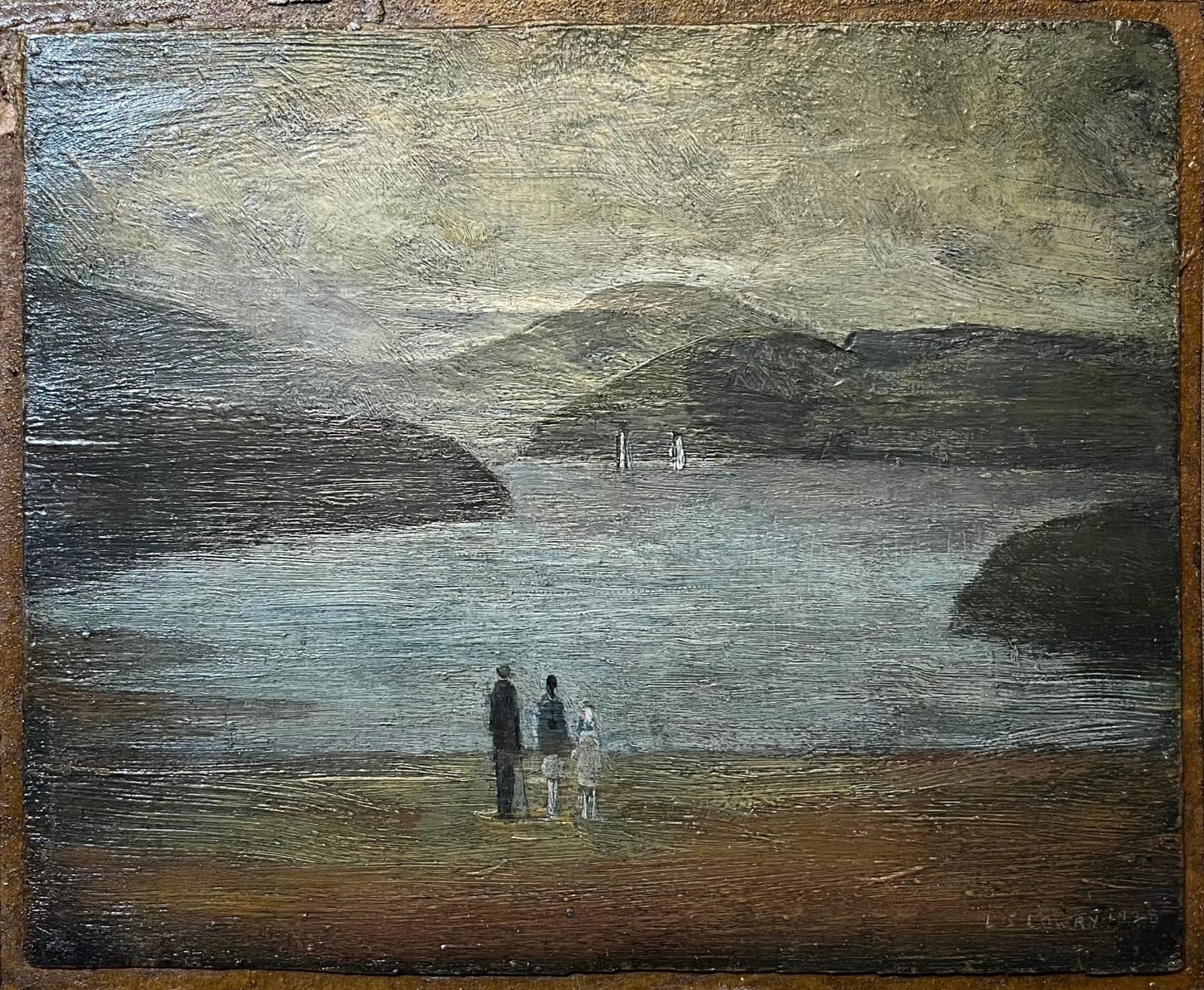10 Interesting Facts About L.S. Lowry
Few famous British artists have captured the essence of industrial Britain quite like L.S. Lowry. His distinctive “matchstick man” style and evocative depictions of Northern life make L.S. Lowry's art some of the most recognisable in British history. But beyond his celebrated works, Lowry lived a fascinating and unconventional life.
In this article, we uncover 10 surprising L.S. Lowry biography facts—from his personal quirks to his artistic influences—that reveal the man behind the paintings.
1. Lowry Never Owned a Car

Despite achieving financial success, Lowry never learned to drive or owned a vehicle. Instead, he relied on public transport and long walks, which became a source of inspiration for his work. He often wandered through Manchester, Salford, and surrounding mill towns, sketching scenes of everyday life.
His decision to avoid driving reflects his humble and unassuming nature, aligning with the working-class subjects he portrayed. His preference for observing life at ground level gave his industrial landscapes an authenticity that still resonates today.
2. Lowry Left His Entire Estate to Carol Ann Lowry
In a surprising twist, Lowry left his entire estate—valued at over £300,000 at the time—to Carol Ann Lowry, a young woman who was not related to him.
They met when Carol, then a child, wrote to Lowry expressing her admiration for his art. He responded, and over time, they formed a unique friendship. Speculation surrounds why he left her everything, but many believe he saw her as a surrogate daughter, as he never had children of his own. His decision shocked many in the art world after his passing in 1976.
3. His Only Overseas Trips Were to Ireland
Unlike many artists who sought inspiration from international travel, Lowry was largely uninterested in seeing the world beyond Britain. His only recorded trips abroad were to Ireland, where he visited just a handful of times.
His reluctance to explore Europe contrasts with the experiences of many of his contemporaries, who drew influence from Parisian art movements and beyond. Instead, Lowry remained deeply rooted in the industrial landscapes of Northern England, which remained his primary muse.
4. Lowry Mainly Used Just Five Colours in His Paintings

Lowry paintings are characterised by a muted palette, which was created using primarily five colours:
-
Flake White
-
Ivory Black
-
Prussian Blue
-
Yellow Ochre
-
Vermilion
He mixed these to create depth and variety, yet his works maintain a remarkable consistency in tone. This simplicity helped him achieve the stark, atmospheric quality that defines his industrial landscape art.
5. He Worked as a War Artist During World War II
During World War II, Lowry was officially commissioned as a war artist. He documented bombed-out buildings, empty streets, and the eerie quiet of war-torn cities.
His wartime paintings, such as Blitzed Site (1942), differ from his industrial landscape art. Instead, they show deserted landscapes, reflecting the impact of war on British towns. These works highlight Lowry’s ability to capture both the vibrancy and desolation of urban life.
6. Lowry Was Known for His Eccentric Habits
Lowry’s personal life was filled with quirks that fascinated those who knew him. Some of his strangest habits included:
-
Keeping his clocks set at different times, confusing visitors.
-
Frequently staying in hotels, but never unpacking his suitcase.
-
Avoiding social events and declining interviews, despite his fame.
His eccentricities contributed to his reputation as a private, mysterious figure, adding to the intrigue surrounding his life and work.
7. He Created Over 2,500 Paintings and 10,000 Drawings

Lowry was prolific, producing an estimated 2,500 paintings and over 10,000 drawings in his lifetime.
Although best known for his industrial scenes, his portfolio also includes seascapes, portraits, and surreal works. His commitment to his craft never wavered, and even after achieving recognition, he continued painting until his final years.
Today, his works are highly sought after, with some fetching millions at auction.
8. Lowry Was the Official Artist for the Queen’s Coronation
In 1953, Lowry was appointed an official artist for the Coronation of Queen Elizabeth II. This was an unexpected choice, given his usual focus on working-class, industrial scenes rather than regal or ceremonial subjects.
His commissioned works from this event provide a rare glimpse of Lowry’s take on royal pageantry, showing a side of his art that many are unaware of.
9. He Refused Five Honours, Including a Knighthood
Lowry repeatedly turned down official recognition, including:
-
A CBE (1955)
-
An OBE (1961)
-
A Knighthood (1968)
-
Two other honours in later years
Despite his achievements, Lowry rejected these awards, reportedly stating that he did not care for formal recognition. His refusal of a knighthood makes him the most decorated artist never to accept an honour.
This choice reinforced his reputation as a modest, solitary figure who preferred to stay out of the spotlight.
10. There Are Three Statues of Lowry in Public Places
Even after his passing, Lowry’s legacy is celebrated with three public statues:
-
Mottram-in-Longdendale, where he lived for 28 years.
-
Salford Quays, near The Lowry arts centre dedicated to his work.
-
Manchester’s Sam’s Chop House, where he was a regular visitor.
Each statue serves as a tribute to his impact on British art and the enduring popularity of his work.
L.S. Lowry’s legacy extends far beyond his famous "matchstick men." His quirks, habits, and artistic choices reveal a man dedicated to his craft, deeply connected to Northern England, and uninterested in fame or fortune.
His paintings remain some of the most recognisable and beloved in British art history, and his influence continues through exhibitions, auctions, and public tributes.
You can explore more of Lowry’s masterpieces at The Lowry in Salford, where a vast collection of his work is on display, or for other exclusive Lowry paintings, feel free to contact us or visit Contemporary Six for expert guidance, viewings and sales.

